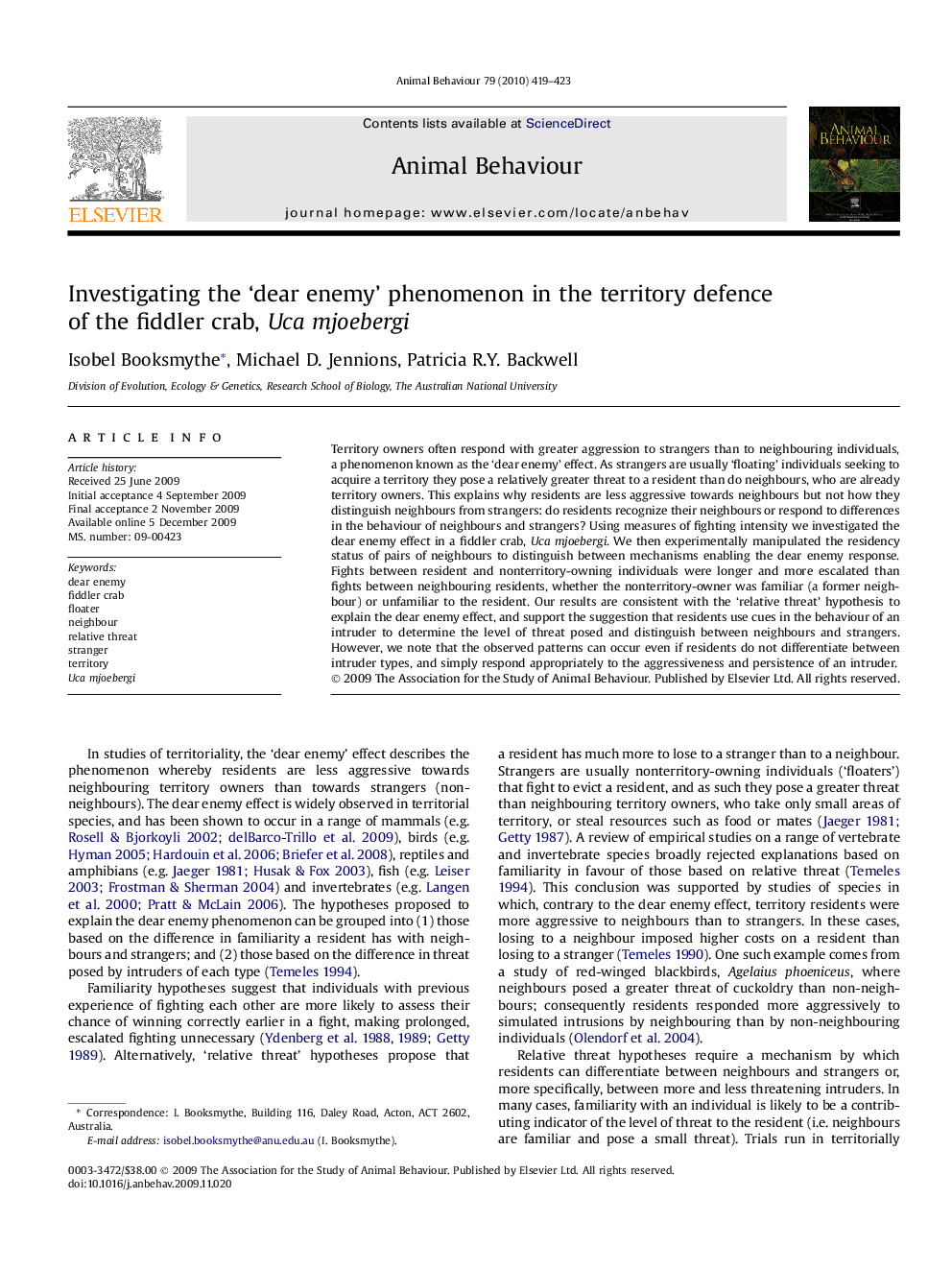| کد مقاله | کد نشریه | سال انتشار | مقاله انگلیسی | نسخه تمام متن |
|---|---|---|---|---|
| 2417486 | 1104320 | 2010 | 5 صفحه PDF | دانلود رایگان |

Territory owners often respond with greater aggression to strangers than to neighbouring individuals, a phenomenon known as the ‘dear enemy’ effect. As strangers are usually ‘floating’ individuals seeking to acquire a territory they pose a relatively greater threat to a resident than do neighbours, who are already territory owners. This explains why residents are less aggressive towards neighbours but not how they distinguish neighbours from strangers: do residents recognize their neighbours or respond to differences in the behaviour of neighbours and strangers? Using measures of fighting intensity we investigated the dear enemy effect in a fiddler crab, Uca mjoebergi. We then experimentally manipulated the residency status of pairs of neighbours to distinguish between mechanisms enabling the dear enemy response. Fights between resident and nonterritory-owning individuals were longer and more escalated than fights between neighbouring residents, whether the nonterritory-owner was familiar (a former neighbour) or unfamiliar to the resident. Our results are consistent with the ‘relative threat’ hypothesis to explain the dear enemy effect, and support the suggestion that residents use cues in the behaviour of an intruder to determine the level of threat posed and distinguish between neighbours and strangers. However, we note that the observed patterns can occur even if residents do not differentiate between intruder types, and simply respond appropriately to the aggressiveness and persistence of an intruder.
Journal: Animal Behaviour - Volume 79, Issue 2, February 2010, Pages 419–423